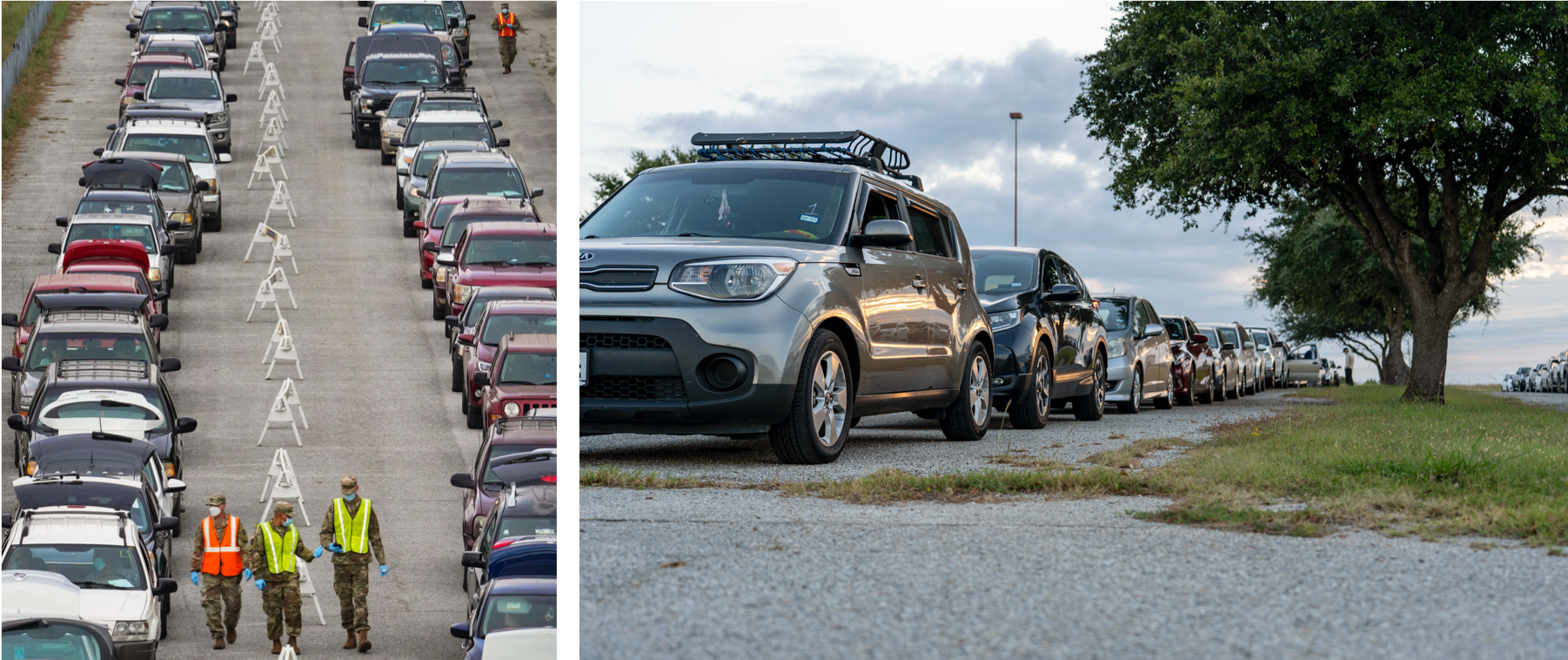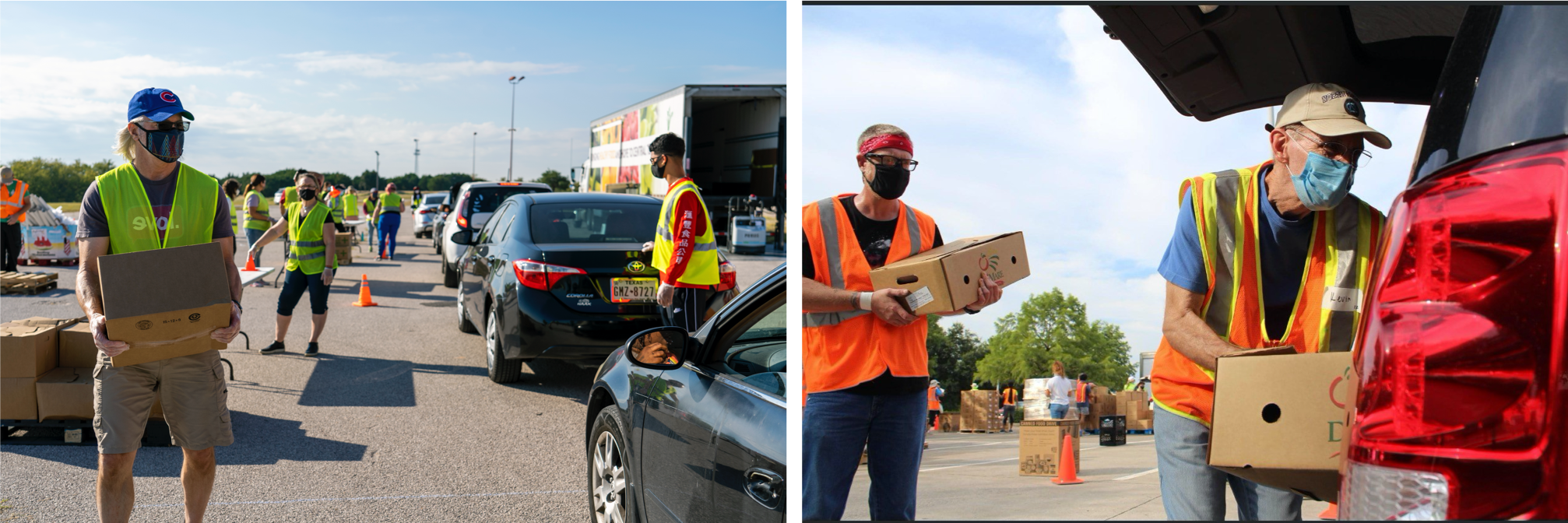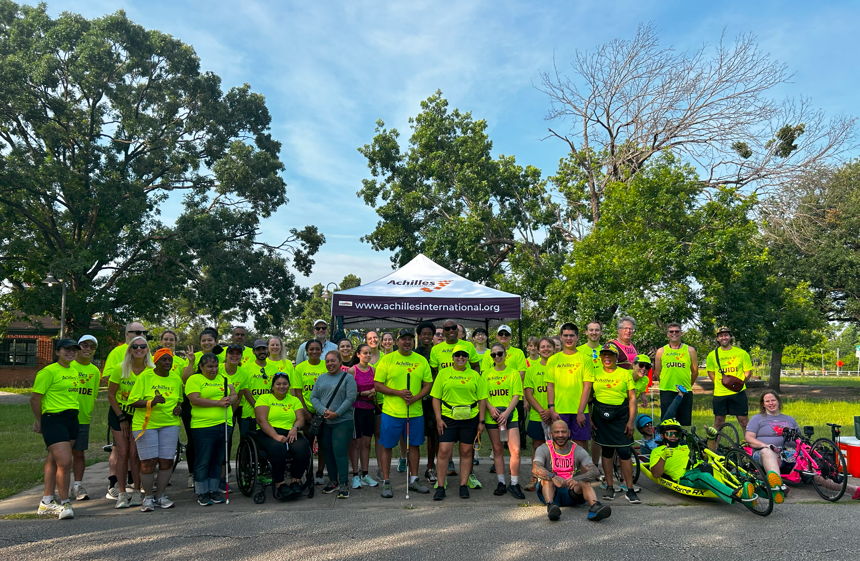
Food Banks’ Dedication to Feeding Texans During a Pandemic
With COVID-19 cases and unemployment rates on the rise, one of the most pressing issues affecting the entire nation is food insecurity: a lack of consistent access to enough food for an active, healthy life.
Before the pandemic, about 10.5% of all U.S. households – or over 35 million Americans – didn’t have enough food to meet their needs. It’s estimated the pandemic has more than doubled the number of food insecure households to 23%.
Children are some of the worst victims of this issue. Nearly 30 million children in the US qualified for free or low-cost lunches at school before the pandemic, but remote learning has created a barrier to food access. Food insecurity in children can lead to negative consequences, with studies showing a direct correlation between the lack of food and poor health and development.
Like many businesses, food banks have had to adapt their operations to continue fulfilling their missions and feeding their communities. The pandemic has only strengthened their fight against hunger as the number of new and current Texans needing support has skyrocketed. Recently, we spoke with three of our grantees on how they’ve pivoted and addressed the growing challenges of food insecurity.

Long line of cars at mobile food bank distribution events
How has your organization pivoted and adapted during the pandemic? How was the Moody Foundation grant used?
Mark Jackson, Central Texas Food Bank (CTFB) chief development officer: When COVID-19 hit, it was clear we had to make some dramatic changes across every aspect of the Food Bank’s operations to serve the increased demand in our community while keeping everyone safe. First, we converted our distribution model to emergency food boxes only in drive-through or low-touch settings to minimize close human interaction. We helped implement this model to our more than 250 Partner Agencies. We added mass drive-through distribution events to our schedule and have done nearly 60 of these since early April. We also made pretty dramatic changes to our volunteer experience, implementing a 25% capacity model in the warehouse and adding health and safety protocols including distanced work stations, masking, hand washing and screening policies.
Feeding America estimated that 560,000 people in our service area are facing hunger, up from 400,000 pre-pandemic. That’s devastating to so many families, especially during the holiday season. But thanks to the Moody Foundation’s generous support, the Food Bank was able to provide 1.4 million meals to individuals and families across 21 counties in Central Texas, aided by the additional trucks funded through the grant.
Erin Fincher, North Texas Food Bank (NTFB) director of foundation relations and strategic initiatives: To safely serve our clients, at the onset of the pandemic, we acted quickly to flip our business model to provide nutritious kitted boxes of food that could be delivered in a low- to no-touch method. Additionally, through education, relationship management, allocation of funds and waived service fees, NTFB ensured our more than 200 Partner Agencies could meet the rising demand and address the needs of their local communities. To assist them, we also ramped up our own direct service through mobile distribution events. At our latest one at Fair Park before Thanksgiving, we distributed more than 600,000 pounds of food to approximately 25,000 people in just three hours.
The pandemic has exacerbated the challenges that many people were already facing. We have seen that approximately 40% of individuals are accessing charitable food assistance for the first time. With the grant we received from the Moody Foundation, NTFB was able to provide 450,000 nutritious meals to families in North Texas at a time when they needed them most. The Moody Foundation is known far and wide for their generosity and thoughtful gifts to make North Texas a better place to raise a family.
Donnie VanAckeren, Galveston County Food Bank (GCFB) president and CEO: One of the most efficient ways to distribute food safely is through the Food Bank’s Mobile Food Distribution program. By late March, the Food Bank had modified all of its mobile units to a drive-thru method of operation. A typical distribution draws more than 300 cars and serves close to 1,000 individuals. The Food Bank’s mobile trucks carry more than 15,000 pounds or the equivalent of 12,500 meals. To alleviate transportation issues, the Food Bank also established a separate mobile food distribution for local agencies to pick up food for the vulnerable people and/or families lacking reliable transportation.
With support from the Moody Foundation, the Food Bank was able to respond quickly to the county’s food insecurity needs. We completed the build out of a 1,000 sq. ft. refrigeration unit right at the onset of the pandemic. The new unit, capable of storing more than 20,000 pounds of food, allowed us to accept tractor/trailer semi-loads of donated perishable food items. We were also able to hire an additional driver to transport the large volumes of much needed food.

Mobile Pantry distribution volunteers
How many people does the organization help every month/year? How many volunteers serve? How do the current numbers compare to pre-pandemic numbers?
Jackson (CTFB): We served 297,000 individuals a month in fiscal year 2020, a 25% increase from fiscal 2019. The unprecedented demand led us to distribute a record 64.5 million pounds of food in fiscal 2020! We’re working with about 1,300 volunteers a month now. Before the pandemic, we had almost 4,000 volunteers a month.
Fincher (NTFB): We are currently distributing about 10-11 million meals per month, about double of what we did pre-pandemic. In our last fiscal year (which ended in June), NTFB served a total of 96.9 million nutritious meals – 20 million more meals than in FY19 and exceeded our year’s goal of 80 million. This demonstrates both the persistent hunger needs in our area and the impact COVID-19 has had on food insecurity. Last year, approximately 24,140 volunteers contributed more than 60,350 hours of their time toward the Food Bank’s mission. While we had to halt many of our traditional volunteer operations in mid-March, we are excited to be opening limited opportunities for them to return under strict safety precautions.
VanAckeren (GCFB): In January, we were distributing the equivalent of 450,000 meals to about 23,000 residents each month. Those numbers jumped to 530,000 meals and 28,000 individuals in April. Our onsite pantry experienced a 65% spike in new clients from March 19 through the end of April due to negative impacts from COVID-19. Other pantry partners reported similar increases. We had over 1,500 volunteers countywide during the early months of the pandemic. Now that number has dropped to less than 1,200 which has had a major impact at our mobile distributions. At least 20 volunteers are needed at each mobile host site to register families, direct traffic, bag food and carry 75 lbs. of food to each car.
Where can the community find more information on how to volunteer, donate and/or a schedule of upcoming food drives?
Jackson (CTFB): Go to our website and like/follow us on Facebook, Twitter and Instagram. The website has a “Find Food Now” button. Those in need can enter their address or zip code to see the food distribution sites nearest to them. They can also call the social services line at 211.
Fincher (NTFB): Everything can be found on our website, including our volunteer opportunities, how to donate and upcoming mobile pantries.
VanAckeren (GCFB): Our website includes all the information needed to get involved, whether you’re interested in donating, volunteering or hosting a food drive.

Hunger Heroes food distribution event in Galveston




